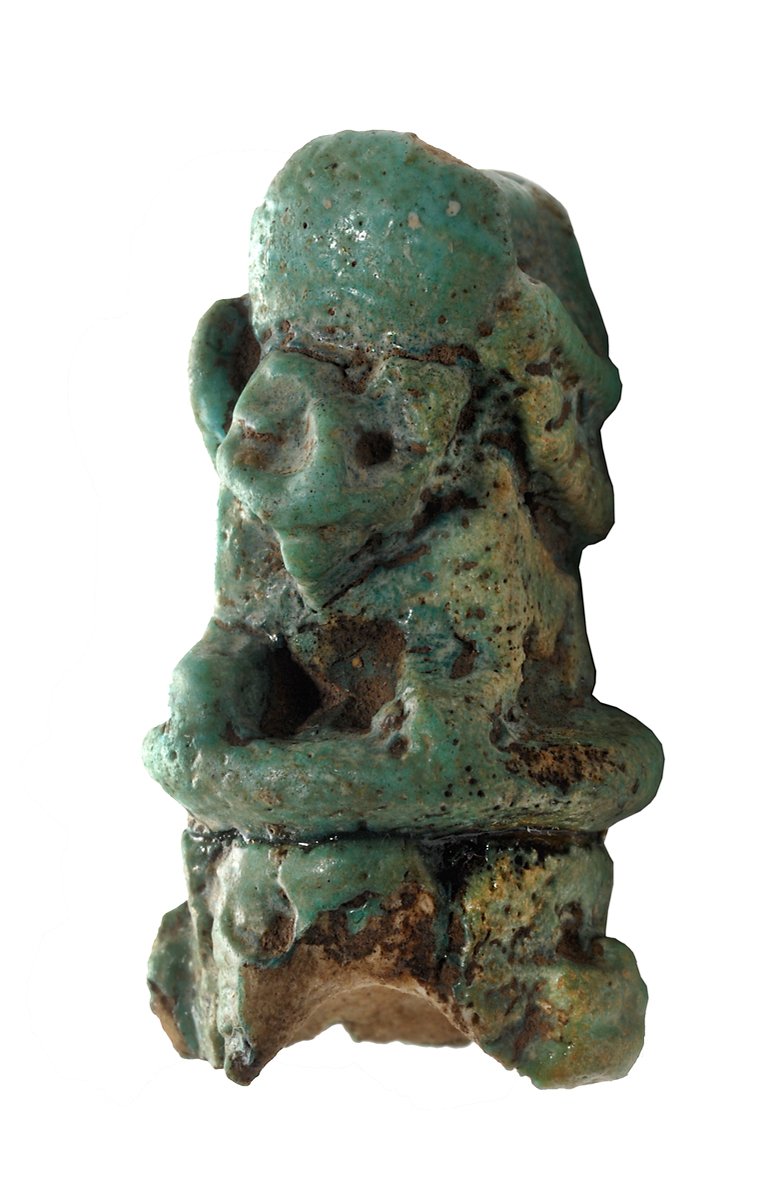
Fragment of a Pataikos Amulet (Lion Figure from the Top)
Egyptian Art
| Place of production | Thebes (?), Egypt |
|---|---|
| Date | 8th-7th century B.C. (722-655) |
| Object type | sculpture |
| Medium, technique | Wood, paint |
| Dimensions | 34.6 x 9.8 x 7.5 cm |
| Inventory number | 51.2090 |
| Collection | Egyptian Art |
| On view | Museum of Fine Arts, Basement Floor, Ancient Egypt, Funerary beliefs |
This funerary figurine is a typical and chronologically well distinguishable example of the painted wooden Ptah-Sokar-Osiris statue type used in a funerary context. The antecedents of the Ptah-Sokar-Osiris statues appeared during the Twentieth Dynasty among burial equipment and remained in use as late as the end of the Ptolemaic Period. The image representing the funerary god was placed close by the coffin and the mummy lying inside it. During the centuries, the elaboration of the design, the iconography and color scheme changed considerably. Many pieces of this type had a hollow in their back or pedestal in order to hide a small funerary papyrus or a so-called corn-mummy symbolizing the rebirth of Osiris from the death. The text placed on them sometimes comprises longer hymnic compositions, but versions of shortened offering formulae were also widely used. They usually record the name of the deceased, i.e., the owner of the statue, and frequently the name of his or her short genealogy.
This stubby figure is represented with a small face and a long black beard. The pigment layer is worn off in many places. There is a vertical fissure along the face that is painted in green. On the top of the head is a hole for fitting the – now missing – tall feather-crown associated with Ptah-Sokar. Below the light-colored collar, the mummified body painted in dark red is covered by a dark blue bead-net patterned motif. The short inscriptions on both the front and back sides have preserved the name of the owner: Kha-aa, son of Khonsumes. Based on the iconographic features, the piece can undoubtedly be dated to the Twenty-fifth Dynasty.
This record is subject to revision due to ongoing research.